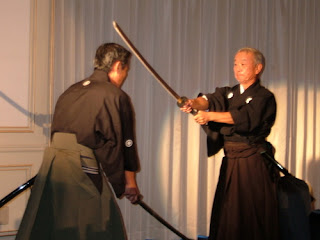
Today,I introduce grades of kendo.I have the 3rd grade,3 dan.
Technical achievement in kendo is measured by advancement in grade, rank or level. The kyu and dan grading system is used to indicate the level of one's skill in kendo. The dan levels are from sho-dan,first dan,to ju-dan,tenth dan. There are usually 6 grades below sho-dan known as kyu. The kyu numbering is in reverse order, with ikkyu,first kyu,being the grade immediately below sho-dan and rok-kyu,sixth kyu,being the lowest grade.
Hachi-dan,eighth dan,is the highest dan grade attainable through a test of physical kendo skills. In the AJKF the grades of kyu-dan,ninth dan,and ju-dan,tenth dan,are no longer awarded, but kyu-dan,ninth dan,kendoka are still active in Japanese kendo.International Kendo Federation grading rules allow national kendo organisations to establish a special committee to consider the award of those grades.
















 Today,I introduce
Today,I introduce 






